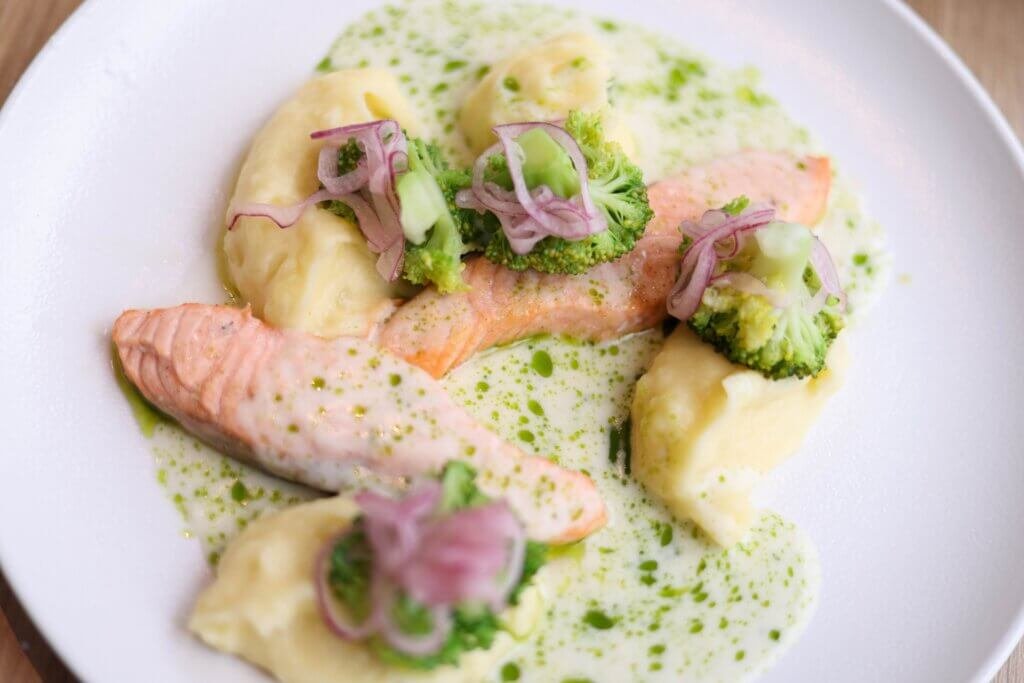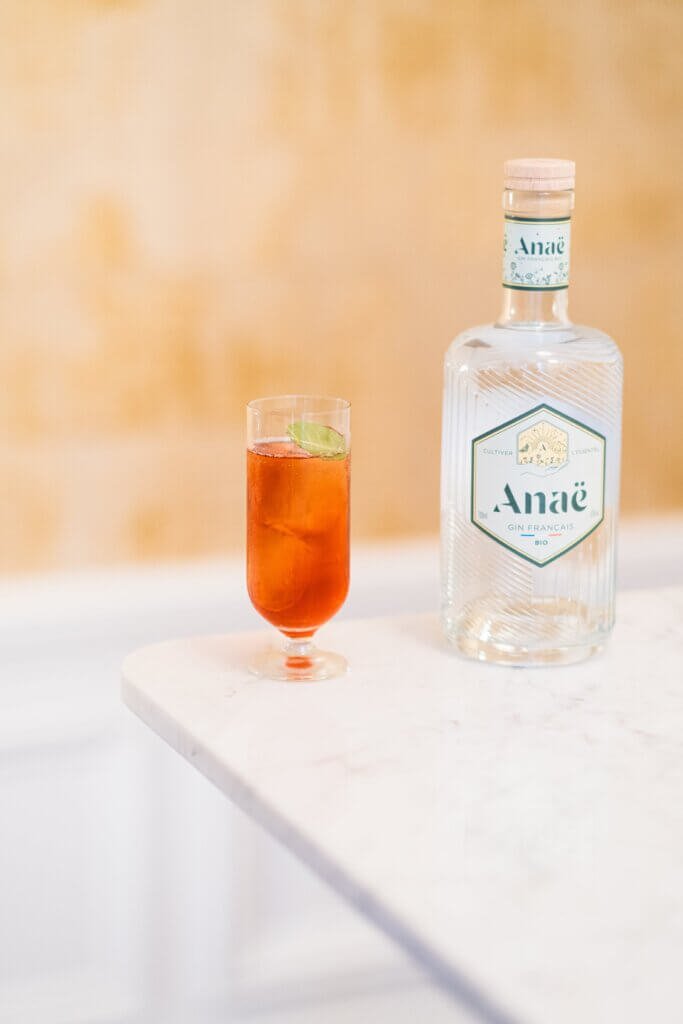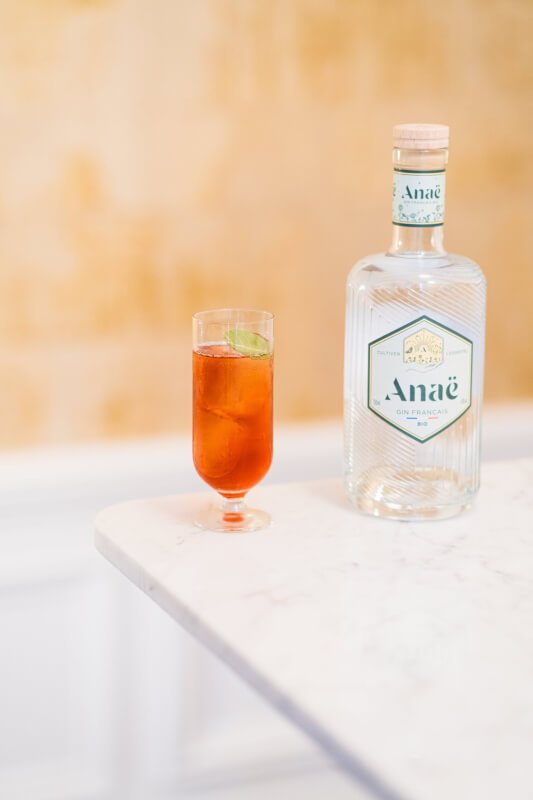Get ready to indulge in the perfect combination of sweetness and sophistication! In “The Ultimate Guide To Pairing Desserts With After-Dinner Drinks,” we delve into the enchanting world of dessert and drink pairings. From silky chocolates to creamy custards, this article offers a roadmap to creating the most delightful and harmonious endings to your meals. Whether you are a novice or a connoisseur, prepare to elevate your taste buds and impress your guests with our expert tips and tantalizing suggestions.

Understanding the Importance of Pairing Desserts with After-Dinner Drinks
Pairing desserts with after-dinner drinks is not just about indulging in a delicious treat, it’s about enhancing the overall flavor experience and creating a harmonious balance of sweetness and acidity. The right combination can elevate both the dessert and the drink, creating a sensational sensory experience.
Enhancing the Flavor Experience
Pairing desserts with after-dinner drinks goes beyond simply satisfying your sweet tooth. When done correctly, it can enhance the flavor experience of both the dessert and the drink. The complementary flavors of the pairing can create a symphony of tastes that tantalize your taste buds and leave you craving for more.
By carefully selecting the right drink to accompany your dessert, you have the opportunity to bring out hidden flavors, intensify sweetness, and even add new dimensions to the taste. It’s like a culinary adventure for your palate, exploring new and exciting combinations that leave you pleasantly surprised.
Balancing Sweetness and Acidity
One of the key aspects of dessert and drink pairing is finding the right balance between sweetness and acidity. While desserts are often sweet, it’s important to choose a drink that can cut through the sweetness and provide a refreshing contrast.
Acidity in the drink can help cleanse the palate and prevent the dessert from becoming overly cloying. It adds a refreshing element and helps to balance the overall taste. Finding the perfect balance between sweetness and acidity is crucial for a successful dessert and drink pairing.
Choosing Complementary Flavors
When pairing desserts with after-dinner drinks, it’s important to consider the flavors of both the dessert and the drink. Choosing complementary flavors can create a harmonious combination that enhances the overall taste experience.
For example, pairing a rich and creamy dessert with a sweet fortified wine can create a luxurious and decadent flavor profile. On the other hand, pairing a tart fruit-based dessert with a dessert wine can create a balance of sweet and tangy.
When choosing complementary flavors, consider the dominant flavors in both the dessert and the drink and look for similarities or contrasting elements that can create an interesting and enjoyable combination.
Classic Combinations to Try
While there are countless possibilities when it comes to dessert and drink pairings, there are some classic combinations that have stood the test of time. These tried and true pairings are guaranteed to please your palate.
Chocolate Cake with Port Wine
The rich, indulgent flavors of chocolate cake pair perfectly with the velvety sweetness of a good port wine. The smooth texture of the cake is beautifully complemented by the robust and complex flavors of the port, creating a truly decadent combination.
The dark fruit notes in the port wine harmonize with the deep chocolate flavors, creating a symphony of tastes that is both luxurious and satisfying. Whether it’s a dense flourless chocolate cake or a classic chocolate layer cake, this pairing will never disappoint.
Cheesecake with Champagne
There’s something about the creamy, tangy goodness of cheesecake that pairs wonderfully with the effervescence and elegance of champagne. The light and airy texture of the cheesecake is perfectly balanced by the crispness of the champagne, creating a delightful contrast.
The acidity of the champagne cuts through the richness of the cheesecake, refreshing the palate after each bite. The fruity and toasty notes in the champagne complement the creaminess of the cheesecake, creating a harmonious and sophisticated pairing.
Fruit Tart with Moscato
The vibrant flavors of a fruit tart are beautifully enhanced by the sweet and aromatic qualities of a Moscato wine. The tartness of the fruit is balanced by the gentle sweetness of the wine, creating a delightful harmony of tastes.
Moscato’s floral and fruity notes elevate the refreshing flavors of the fruit tart, adding a layer of complexity to the combination. Whether it’s a classic mixed berry tart or a tangy lemon tart, this pairing is a match made in dessert heaven.
Exploring Different Types of After-Dinner Drinks
When it comes to after-dinner drinks, there is a wide range of options to choose from. From rich and fortified wines to sparkling and bubbly choices, each type of drink brings its own unique qualities to the pairing experience. Let’s explore some of the most popular after-dinner drinks and their characteristics.
Port Wine
Port wine is a rich, sweet, and fortified wine that originates from Portugal. It is typically red in color and has a full-bodied, velvety texture. Port wine is known for its complex flavors, ranging from dark fruits and chocolate to spices and nuts. It pairs well with chocolate-based desserts, such as chocolate cake or brownies, as the richness of the wine complements the deep flavors of the chocolate.
Sherry
Sherry is a fortified wine that comes from the Jerez region in Spain. It can be dry or sweet, and its flavor profile varies depending on the type of sherry. Dry sherries, such as Fino or Manzanilla, have a crisp and nutty taste, while sweet sherries, such as Pedro Ximénez or Cream Sherry, are rich and syrupy.
Dry sherries are excellent choices for pairing with nutty desserts, such as pecan pie or baklava, as the nutty flavors of both the sherry and the dessert complement each other. Sweet sherries, on the other hand, pair well with creamy desserts, such as crème brûlée or flan, as the sweetness of the sherry enhances the creaminess of the dessert.
Madeira
Madeira is a fortified wine produced on the island of Madeira, located off the coast of Portugal. It is known for its unique aging process, which involves heating the wine to simulate the effects of long-term aging.
Madeira wines range from dry to sweet and offer a wide variety of flavors, including caramel, dried fruits, and nuts. Madeira pairs well with rich and creamy desserts, such as tiramisu or bread pudding, as the sweetness and complexity of the wine complement the flavors of the dessert.
Moscato
Moscato is a sweet and aromatic white wine that originates from Italy. It is known for its fruity and floral flavors, with notes of peach, orange blossom, and honey. Moscato is typically light-bodied and has a lower alcohol content compared to other wines.
This sweet and refreshing wine pairs well with fruit-based desserts, such as fruit tarts or berry crumbles, as the sweetness of the wine enhances the natural sweetness of the fruits. The bright and aromatic qualities of Moscato also complement citrusy desserts, such as lemon bars or key lime pie.
Champagne
Champagne is a sparkling wine that comes from the Champagne region of France. It is made using traditional methods, resulting in a wine with fine bubbles and a crisp, refreshing taste. Champagne is known for its elegant and celebratory qualities, making it a popular choice for special occasions.
Champagne pairs well with a variety of desserts, from light and fruity to rich and creamy. It complements creamy and delicate desserts, such as panna cotta or vanilla custard, as the effervescence of the wine adds a lightness to the dish. Champagne also pairs well with fresh berries or citrus-based desserts, as the acidity and bubbles cut through the sweetness.
Brandy
Brandy is a distilled spirit made from fermented fruit juice or wine. It is often enjoyed as an after-dinner drink and is known for its rich flavors and warming qualities. Brandy pairs well with a wide range of desserts, from chocolate-based to creamy and fruity.
The depth and complexity of brandy enhance the flavors of chocolate desserts, such as molten lava cake or chocolate mousse. It also pairs well with creamy desserts, such as crème brûlée or bread pudding, as the richness of the brandy complements the creaminess of the dessert. Additionally, brandy can be a great accompaniment to fruit-based desserts, such as apple pie or poached pears, as the fruity flavors of the brandy complement the natural sweetness of the fruits.
Pairing Tips for Specific Dessert Types
When it comes to pairing desserts with after-dinner drinks, different dessert types require different approaches. Here are some pairing tips for specific dessert categories to help you create the perfect harmony of flavors.
Chocolate-Based Desserts
Chocolate-based desserts, with their rich and intense flavors, pair well with drinks that can match their depth. Look for drinks with bold flavors, such as port wine or a full-bodied red wine. The sweetness of the wine can enhance the sweetness of the chocolate, while the complex flavors can elevate the overall experience.
For a lighter option, try pairing chocolate desserts with a fruity and robust red wine, such as a Cabernet Sauvignon or a Syrah. The fruity notes in the wine can create a delightful contrast to the chocolate and add an extra layer of complexity.
Fruit-Based Desserts
Fruit-based desserts, with their natural sweetness and vibrant flavors, require drinks that can complement rather than overpower the fruits. Light and fruity wines, such as Moscato or Riesling, can be excellent choices for pairing with fruit tarts or berry crumbles.
If you prefer a more indulgent pairing, consider serving fruit-based desserts with a sweet dessert wine, such as Sauternes or late-harvest Riesling. The sweetness and complexity of the wine can enhance the flavors of the fruits and create a luscious combination.
Creamy and Rich Desserts
Creamy and rich desserts, such as cheesecake or crème brûlée, pair well with drinks that can cut through the richness and provide a refreshing contrast. Sparkling wines, such as Champagne or Prosecco, can be excellent choices, as the effervescence and acidity can cleanse the palate and prevent the dessert from becoming overwhelming.
Fortified wines, such as Sherry or Madeira, are also great options for pairing with creamy and rich desserts. The sweetness and complexity of the wines can complement the richness of the dessert, creating a luxurious and indulgent combination.
Citrusy Desserts
Citrusy desserts, with their bright and tangy flavors, require drinks that can enhance the citrus notes without overpowering them. Light and crisp white wines, such as Sauvignon Blanc or Chenin Blanc, can be excellent choices for pairing with lemon bars or key lime pie.
If you prefer a sweeter pairing, consider serving citrusy desserts with a sweet Riesling or a late-harvest Gewürztraminer. The sweetness of the wine can complement the tartness of the dessert, creating a delightful balance of flavors.
Nutty Desserts
Nutty desserts, with their rich and toasty flavors, pair well with drinks that can match their depth. Sweet fortified wines, such as Sherry or Madeira, can be excellent choices for pairing with pecan pie or baklava.
For a more adventurous pairing, consider serving nutty desserts with a rich and aged whiskey. The smoky and oaky flavors of the whiskey can complement the nuttiness of the dessert and create a unique and memorable combination.

Considerations for Texture and Mouthfeel
In addition to considering the flavors of both the dessert and the drink, it’s also important to take into account the texture and mouthfeel of the pairing. Different desserts have different textures, ranging from light and crisp to rich and creamy. Likewise, different drinks have different levels of effervescence, body, and viscosity.
By taking into consideration the texture and mouthfeel of the dessert and the drink, you can create a pairing that is not only harmonious in terms of flavors but also in terms of overall sensory experience.
Light and Crisp Desserts with Sparkling Wines
Light and crisp desserts, such as fruit sorbets or meringues, pair well with drinks that have a similar lightness and effervescence. Sparkling wines, such as Champagne or Prosecco, can be perfect choices for pairing with these types of desserts.
The effervescence of the wine adds a refreshing element to the pairing, while the crispness and acidity complement the light and delicate textures of the desserts. The bubbles also provide a playful contrast to the creaminess of the desserts, creating a delightful sensory experience.
Rich and Creamy Desserts with Sweet Fortified Wines
Rich and creamy desserts, such as tiramisu or crème brûlée, require drinks that can match their indulgent textures. Sweet fortified wines, such as Sherry or Madeira, can be excellent choices for pairing with these types of desserts.
The richness and complexity of the wines complement the creaminess of the desserts, creating a luxurious and decadent combination. The viscosity of the wines adds a velvety mouthfeel to the pairing, further enhancing the overall sensory experience.
Fruity and Tart Desserts with Dessert Wines
Fruity and tart desserts, such as fruit tarts or lemon bars, pair well with drinks that can enhance the natural sweetness and acidity of the fruits. Dessert wines, such as late-harvest Riesling or Sauternes, can be perfect choices for pairing with these types of desserts.
The sweetness of the wines complements the natural sweetness of the fruits, while the acidity provides a refreshing contrast to the tartness. The complex and vibrant flavors of the wines elevate the overall taste experience, creating a harmonious combination of flavors and textures.
Creating Harmonious Flavor Combinations
When it comes to dessert and drink pairings, there are endless possibilities for creating harmonious flavor combinations. By experimenting with different flavors, textures, and profiles, you have the opportunity to unleash new tastes and flavors that can transform your dessert experience.
Sweet and Salty
Combining sweet and salty flavors can create a delightful balance of tastes that is both comforting and intriguing. Consider pairing a salted caramel dessert with a rich and velvety tawny port wine. The caramel sweetness of the dessert is beautifully complemented by the nutty and salty flavors of the wine, creating a harmonious and indulgent combination.
Alternatively, try serving a sea salt chocolate mousse with a dark and robust red wine. The bitterness of the chocolate is balanced by the fruity and tannic qualities of the wine, while the touch of sea salt adds a savory element that enhances the overall experience.
Rich and Fruity
Pairing rich and fruity flavors can create a combination that is both decadent and refreshing. Consider serving a black forest cake, with its layers of chocolate and cherries, with a fruity and aromatic Pinot Noir. The dark fruit flavors in the wine complement the cherries in the cake, while the acidity of the wine adds a refreshing element.
For a more tropical twist, try pairing a creamy coconut dessert with a tropical fruit-infused rum. The creamy richness of the dessert is beautifully enhanced by the fruity and exotic flavors of the rum, creating a tropical paradise on your palate.
Bitter and Sweet
Pairing bitter and sweet flavors can create a complex and intriguing combination that challenges your taste buds. Consider serving a bitter dark chocolate dessert with a robust and bitter espresso martini. The bitterness in both the dessert and the drink enhances each other, creating a bold and intense combination of flavors.
Alternatively, try serving a bitter orange tart with a sweet and citrusy Aperol Spritz. The bitterness of the orange peel in the tart is balanced by the sweetness and effervescence of the cocktail, creating a refreshing and bittersweet pairing.

Breaking the Rules: Unexpected Pairings to Try
While classic pairings are always a safe bet, sometimes it’s fun to break the rules and try unexpected combinations that challenge your taste buds. Here are some unconventional pairings that push the boundaries and can surprise you with their harmonious flavors.
Savory Desserts with Whiskey
Savory desserts, with their unique combination of sweet and savory flavors, can be paired with a bold and smoky whiskey for a surprising and delightful combination. Consider serving a bacon-infused chocolate dessert with a peaty and smoky Scotch whisky. The smokiness in the whisky enhances the savory flavors of the bacon, while the sweetness of the dessert complements the richness of the whisky.
For a fruit-forward option, try pairing a blue cheese and fig tart with a rich and oaky bourbon. The creamy and salty flavors of the cheese are beautifully complemented by the fruity and caramel notes in the bourbon, creating a contrasting combination that is both unexpected and delicious.
Spicy Desserts with Tequila
Spicy desserts, with their fiery and bold flavors, pair well with drinks that can match their intensity. Tequila, with its earthy and peppery qualities, can be a surprising and perfect choice for pairing with spicy desserts.
Consider serving a chili chocolate dessert with a high-quality añejo tequila. The spiciness in the dessert is beautifully complemented by the heat and complexity of the tequila, creating a fiery and exhilarating combination of flavors. The smoothness of the tequila also helps to balance out the richness and heat of the dessert, creating a well-rounded pairing.
Herb-Infused Desserts with Vermouth
Herb-infused desserts, with their unique and refreshing flavors, can be paired with a botanical and herbaceous vermouth for a surprising and delightful combination. Consider serving a lavender-infused panna cotta with a dry and herbaceous white vermouth. The floral and herbal notes in the vermouth enhance the delicate flavors of the lavender, while the crispness and acidity of the vermouth add a refreshing element to the pairing.
For a more adventurous option, try pairing a thyme and lemon tart with a citrusy and vibrant red vermouth. The herbal and citrus flavors in the vermouth complement the thyme and lemon in the tart, creating a dynamic and unexpected combination of tastes.
Tips for Hosting a Dessert and Drink Pairing Party
Hosting a dessert and drink pairing party can be a fun and memorable way to explore different flavor combinations and indulge in delicious treats. Here are some tips to help you create an unforgettable experience for your guests.
Creating a Balanced Menu
When planning your dessert and drink pairing menu, aim for a balanced selection of flavors, textures, and drink profiles. Offer a variety of desserts that cater to different tastes and preferences, from rich and chocolatey to light and fruity.
Consider offering a range of after-dinner drinks, including wines, fortified wines, liqueurs, and spirits. This will allow your guests to explore different flavor profiles and find their own favorite pairings.
To ensure a harmonious experience for your guests, provide pairing suggestions for each dessert and drink combination. This will help guide your guests and ensure they make the most of their tasting experience.
Serving Sizes and Presentation
When serving desserts and drinks at a pairing party, it’s important to consider portion sizes and presentation. Offer bite-sized portions of desserts, allowing your guests to sample multiple combinations without feeling overwhelmed.
Consider using small tasting glasses or wine glasses for serving the drinks. This will allow your guests to appreciate the aromas and flavors of the drinks without consuming excessive amounts.
Presentation is key when it comes to dessert and drink pairings. Take the time to garnish and plate the desserts beautifully, enhancing the visual appeal and making them even more enticing.
Educating Your Guests
Take the opportunity to educate your guests about the desserts and drinks they are experiencing. Provide information about the flavors, origins, and characteristics of the desserts and drinks, allowing your guests to develop a deeper appreciation for the pairings.
Encourage your guests to discuss their thoughts and experiences with the pairings, creating a lively and engaging atmosphere. This will not only enhance their enjoyment of the desserts and drinks but also create a memorable and interactive experience for everyone.

Understanding Personal Preferences and Experimenting
When it comes to dessert and drink pairing, personal preferences play a significant role. Everyone’s taste buds are unique, and what works for one person may not work for another. It’s important to understand your own tasting profile and experiment with different combinations to find your own perfect pairing.
Discovering Your Own Tasting Profile
To understand your own tasting profile, take the time to explore different flavor combinations and pay attention to the flavors and textures that you enjoy the most. Experiment with different desserts and drinks, taking note of what works well and what doesn’t.
Consider your personal preferences when it comes to sweetness, acidity, and intensity of flavors. Some people prefer bold and intense flavors, while others may prefer more delicate and subtle combinations. Understanding your own preferences will help you create pairings that cater specifically to your taste buds.
Trying New Combinations
Don’t be afraid to step out of your comfort zone and try new combinations. The beauty of dessert and drink pairing is the endless possibilities and the opportunity to discover new flavors and tastes.
Experiment with unexpected pairings and push the boundaries of conventional wisdom. Play with contrasting flavors, textures, and profiles, and let your taste buds guide you. You never know, you might stumble upon a combination that becomes your new favorite.
Conclusion
Pairing desserts with after-dinner drinks is an art form that can elevate the dessert experience to new heights. By understanding the importance of flavor balance, choosing complementary flavors, and considering texture and mouthfeel, you can create harmonious and memorable pairings that delight your taste buds.
Classic combinations like chocolate cake with port wine or cheesecake with champagne are surefire winners that never fail to impress. However, don’t be afraid to break the rules and try unexpected pairings that challenge your palate.
Hosting a dessert and drink pairing party can be a fun and interactive way to explore different flavors and indulge in delicious treats. Remember to provide pairing suggestions, serve bite-sized portions, and educate your guests about the desserts and drinks they are experiencing.
Ultimately, dessert and drink pairing is about enhancing your dessert experience, unleashing new tastes and flavors, and creating moments of pure enjoyment. So go ahead, explore the world of dessert and drink pairings, and embark on a sweet journey that will tantalize your taste buds and delight your soul.



